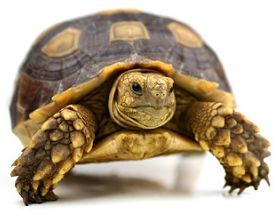 The right light for the job always depends on a number of factors. But usually those factors don’t include turtles. Near beaches where turtles nest, however, this is a real consideration that beach communities are taking note of. This is because too much lighting can dissuade turtles from venturing onto a beach to bury their eggs, and can mislead baby turtles when they hatch and try to find their way to the safety of the sea. Female turtles look for a safe environment for laying and burying eggs, and it appears that they prefer the dark for this process. If they cannot find a beach that offers the security of darkness, they often lay their eggs in less ideal locations, where the eggs are more prone to the elements and predation. What’s more, even if eggs are successfully buried on a beach, baby turtles hatch and then climb out of the sand at night -- apparently another safety precaution. They are then meant to make their way to the ocean, and many believe they are guided by light. In a natural setting, the water with its open horizon would typically offer the most light, and the turtles would successfully head that way. But this isn’t true if humans have placed lights nearby. Artificial lighting will often lead the babies away from the sea, only to be lost to predators or dehydration. DID YOU KNOW? Several sources suggest that baby turtles make their way to the ocean by following the moon. But the moon often isn't out at night, and often isn't in the direction of the water. So we know the moon isn't really their compass, though its reflected light on the water -- when available -- may assist.
|
This blog's content is copyright © 2014-19 Lighting Supply.

